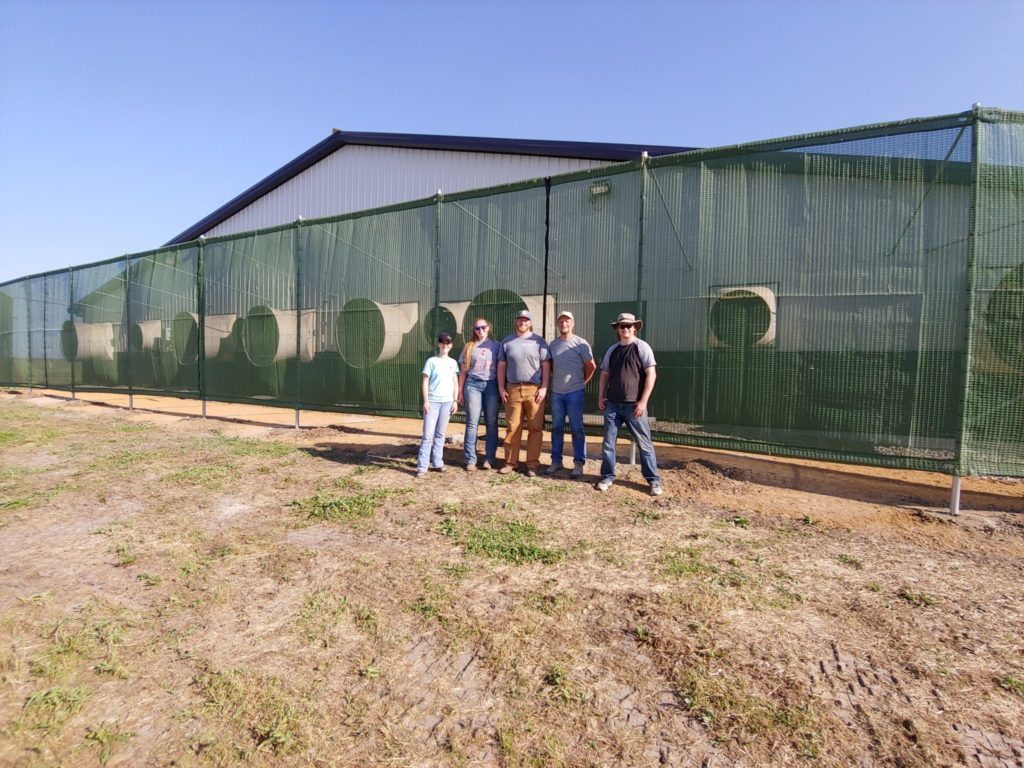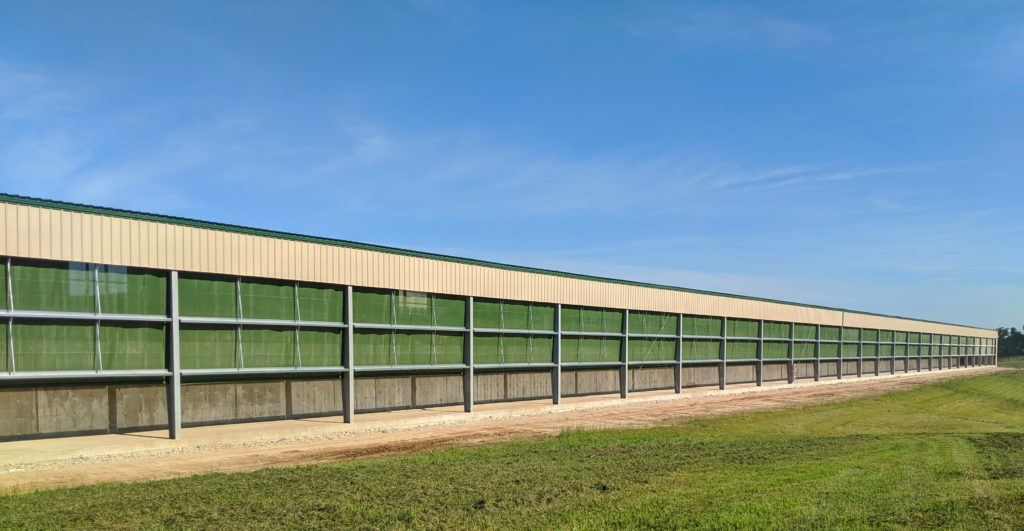EPI AIR FILTER WALL
Shocking smell
A two-part system for the barn that helps clear the air.

As complaints about odor emissions increase, poultry and swine producers have come under increasing pressure to reduce their impact on the surrounding areas. These emissions (comprised primarily of ammonia, hydrogen sulfide, volatile organic compounds) are not only odorous, but have potentially harmful effects on the environment and the health of both humans and animals.
As a result, numerous technologies promising to solve the smell problem became available. In 2011, one product was the focus of a study was conducted by Texas Water Resources Institute (TWRI). The study was to determine how effective the new technology was at reducing odors, dust, and gas emissions from a commercial poultry farm.
NEW TECHNOLOGY
The technology, developed by John Baumgartner of EPI Air was a twofold system comprised of an Electrostatic Particle Ionization (EPI) system and a Bio-Curtain.
The first phase, the EPI technology, is for inside the barn and comprises four basic elements: a power supply, corona pipes, a high voltage (on/off) switch, and a motorized winch. Once installed, the rows of sharp-pointed stainless-steel corona pipes and a high voltage power supply are used to generate an ionization field within the barn. What this system looks like is steel bars suspended from a barn ceiling, spaced equally apart and depending on a producers’ needs, usually hanging about 50 inches above the floor. The high voltage switch can turn the system on and off and the motorized winch can change the height of the corona pipes, both switches allowing a producer to get into the barn to do chores. When on and charged, the EPI system creates an electric field of negative charged ions. These negatively charged ions attach themselves to the molecular structures of ammonia and other particles. These highly charged particles then either grounded themselves and dissipate, or would aggregate into larger particulates which would be attracted to a grounded surface.
The EPI in-barn technology was then used to create the EPI Air Filter Wall technology. By replacing the corona pipes with a corona wire, and installing it directly outside the exhaust fans of the barn, the filter wall is able to ionize the air as it leaves the barn. This forces all the exhaust air through the same ionizing field as the in-barn EPI systems.
The next phase was the Bio-Curtain – a wall of 3D-geotextile fabric attached to metal frame fencing which ran on the outside of the barn in front of the exhaust fans. The exhaust fan blew the air through the Bio-Curtain, particulate matter was filtered out, and then either settled on the ground or stuck to the fabric, cleaning the air that was released from the barns. The aggregating effect of the EPI field caused the particulate to be much larger, allowing a looser mesh to have a much higher impact.

UPGRADES
Flash forward to 2019, the EPI and Bio-Curtain technologies advanced from their earlier versions after several rounds of fine tuning.
One adjustment was the corona pipe height in the in-barn systems. Victor Munsen, the chief operations officer
of EPI Air, explains how the switch in height came about. “Pretty early on, [the inventor] John was able to optimize the height of the corona pipes. The corona pipes running the length of the barn put out very large quantities of negatively-charged ions into the air, and tend to precipitate dust very quickly . . .[But,] John determined that impact was even greater if the corona pipes were installed around chest level.” Putting the system at chest level wasn’t immediately accepted with open arms. Even though there is a winch switch system that can lift the corona pipes up, farmers sometimes felt uncomfortable. “They’re not going to hurt anybody, I’ve run into them myself,” Munsen reassures. “They do wake you up.”
The cleaner air creates a healthier environment for the animals. “When [the system] is in the barn itself, it has the ability to precipitate airborne particles. A lot of the airborne viruses travel on particulate matter,” Munsen explains. “Studies have found when you drop the particulate matter out of the air, a percentage of the airborne viruses come with it. Additionally, there have been studies that suggest that large ion concentrations actually inactivate airborne viruses, not just knock them out of the air,” he adds.
Munsen points to one example where a customer has specifically used the EPI Air Filter Wall to help contain the spread of disease. “We have a client that specifically installed the filter wall because, whenever they got new pigs in their quarantine barn, the neighboring barn would get a spike in illnesses,” Munsen recalls. “After it was installed – although they did not conduct a study – they reported to us that they have not had any incidents since.”
For those farmers more concerned about their exhaust air than the in-barn environment, EPI Air also upgraded the EPI Air Filter Wall from its early design.
“What we did to make this filter wall was take the corona pipes from the in-barn solution we had and turn them into wires, just for ease of installation and weather resistance. We then installed them across the air flow for the barn in front of the Bio-Curtain,” Munsen explains.
